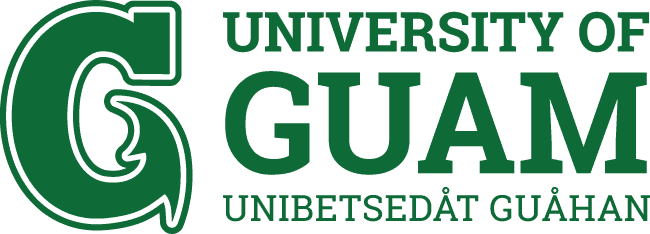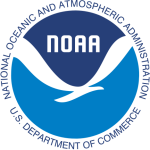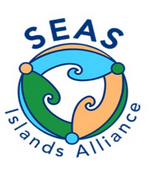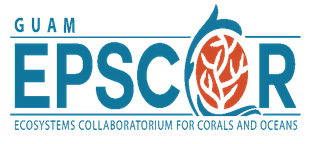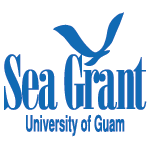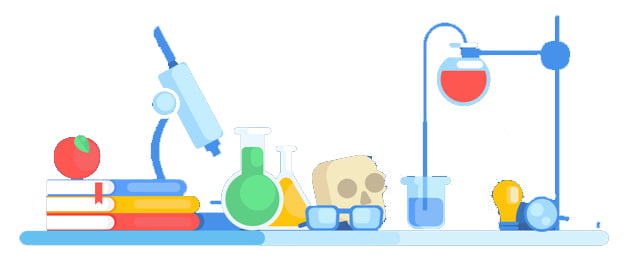46TH Annual Guam Island Wide
Science Fair
Entry forms due at the governor's office (central files) by friday march 22, 2024
Ecology Earth Science and Sustainability
Physical Science, Electronics, Computer and Math
Human and Medical
Animal and Plant
Chemistry
Energy, Inventions, Engineering, and Robotic
Schedule of Events
MARCH 22, 2024
Entries to be submitted to the Governor's office at Central Files
Assignment of room numbers and judging
MARCH 26 - 30, 2024
APRIL 5, 2024
Setup Project
Friday 5:00PM – 7:00PM
Setup project at the University of Guam Science Building
Science Fair judging @ UOG Science Building
APRIL 6, 2024
APRIL 28, 2024
Awards Ceremony
Sunday 6:00PM
Guam Hilton Micronesian Room
Benefits of Participating in Science Fair
Science projects help teach language arts skills, research skills, graphing, data collection, and math skills. This is ideal for unifying skills across the curriculum
Students who complete science projects are more likely to be accepted to colleges of their choice and are better prepared to handle college curriculums.
Students who complete science projects are more likely to complete science degrees.
Students who complete science projects are often successful in starting their own businesses.
Many successful people have completed science projects and promote their value as a first step to later success.
Science projects use a method for solving problems that is important for success in life.
Why Do A Science Fair Project?
Scientific Steps
Research
Research
What do scientists think they already know about the topic? What are the processes involved and how do they work? Background research can be gathered first hand from primary sources such as interviews with a teacher, scientist at a local university, or other person with specialized knowledge. Or use secondary sources such as books, magazines, journals, newspapers, online documents, or literature from non-profit organizations. Don’t forget to make a record of any resource used so that credit can be given in a bibliography.

Hypothesis
Hypothesis
After gathering background research, the next step is to formulate a hypothesis. More than a random guess, a hypothesis is a testable statement based on background knowledge, research, or scientific reason. A hypothesis states the anticipated cause and effect that may be observed during the investigation.

Design Experiment
Design Experiment
Once a hypothesis has been formulated, it is time to design a procedure to test it. A well-designed investigation contains procedures that take into account all of the factors that could impact the results of the investigation. These factors are called variables.

Data Collection
Data Collection
After designing the experiment and gathering the materials, it is time to set up and to carry out the investigation. Carrying out the investigation involves data collection. There are two types of data that may be collected—quantitative data and qualitative data.

Analyze Data
Analyze Data
After data has been collected, the next step is to analyze it. The goal of data analysis is to determine if there is a relationship between the independent and dependent variables. In student terms, this is called “looking for patterns in the data.”

Draw Conclusions
Draw Conclusions
After analyzing the data, the next step is to draw conclusions. Do not change the hypothesis if it does not match the findings. The accuracy of a hypothesis is NOT what constitutes a successful science fair investigation. Rather, Science Fair judges will want to see that the conclusions stated match the data that was collected.

Getting Started
Not sure where to how to get started? Still trying to figure out what your science fair project is going to be this year? We’ve got you covered.
Check out sciencebuddies.org
ABOUT THE FAIR
WHO CAN ENTER?
All Elementary, Middle/Junior, or Senior High-level students from all public, private, home schools and DODEA schools are welcome to submit entries. We realize that schools might not be able to hold traditional school fairs if we have another year with COVID or due to storm damage etc. To accommodate this problem each school can decide how many projects they need to submit, but we will need all entries in on time by March 22, 2024, so we can order enough tables and provide an adequate number of rooms and judges.
SHOULD YOU SUBMIT GROUP PROJECTS?
Projects should be the efforts of individual students. Group entries will not be permitted this year due to the constant problems we have had with partners not showing up or disagreements between group members. At the school level we realize there are limited supplies, and we realize that students may need to work together utilizing the same supplies and equipment and have similar subject matter, but they must have their own project title, they should have their own experimental focus and have their own project poster board and give their own presentation at the science fair. This is important for their education as well. In school a student must take his/her own SAT test for example. They do not get a degree in college as a group, but as an individual, so like we did during the pandemic we are requiring each student enter their own project and project title although they may share supplies like the same robot or drone etc.
HOW DO I ENTER?
A completely filled-out copy of the 46th Annual Guam Island Wide Science Fair Entry Form must be submitted for each entry. Copies of Rules and forms are available on the Official Science Fair Website at (https//guamislandwidesciencefair.org). When filling in the Entry form please supply all information. Note that Completed forms reports and virtual posters must be uploaded into the website if we are virtual no later than 5PM, Friday, March 22, 2024, and a copy of the entry must be submitted signed to the Governors office at Central files. Research projects involving humans, animals, controlled substances, pesticides, hazardous chemicals, tissues, and DNA, must submit the Qualified Scientist Form as well as the entry form. High school students competing for ISEF should turn in those forms as well.
WHAT ABOUT SAFETY?
- Living or dead animals or any potentially dangerous items must be properly displayed and or handled.
- No living or dead animals, insects, or cultures (petri dishes) or hazardous items may be used without approval before you begin your experiment.
- You MUST have the signed approval of a medical doctor if your project involves human research or a veterinarian if your project involves animals before conducting your research, if your project involves animals or if your project serves as a pesticide, or involves use or hazardous chemicals or extracts from plants you must have the supervision of a chemist or biologist with a PhD. Contact Dr. Frank Camacho at the University or Guam science building for help in finding an appropriate person to approve your project.
- Projects involving Blood, humans as test subjects, molds, RNA, DNA or stem cell and tissue cultures require approval before beginning your project in order to meet the International Science and Engineering Fair requirements and guidelines for student research.
We support these safety guidelines and requirements. If you have any questions, or need copies of the required International Science and Engineering Fair rules guidelines for grades 9-12 and the Thermo Fisher Innovation program grades 6 – 9 contact the Fair Director, Claudia Taitano at (youtheducationalservices@gmail.com). At set up time the Scientific Review Committee members will check your project. No potentially dangerous projects will be allowed. Do not bring animals, insects, petri dishes etc to the fair use pictures. Qualified Scientist forms are required in advance of experimenting along with a plan for research. Failure to submit forms in the interest of safety may disqualify entrants from various prizes and participation. ISEF forms for Middle and High School participants are also available on our website at (https/guamislandwidesciencefair.org).
WHAT ARE SUBJECT CATEGORIES?
All projects will be placed in an appropriate category by the entrant(s) and or Science Fair administrators depending upon numbers of projects categories may change. If there is a problem with the category selected by the entrant. The chief judge will settle any disputes. The categories are: 1) Ecology and Earth Science projects, 2) Physical Science: including Electronics, Robotics, Computers, and Math projects, 3) Human/Medical Projects, 4) Biology: including, Plant/Animal projects, 5) Chemistry projects 6) Inventions: Including projects involving Energy, Sustainability, Engineering or Products.
WHAT ARE THE GRADE GROUPINGS?
In determining the trophy awards this year the 46th Annual Island Wide Science Fair will utilize the following grade groupings called Divisions: Division I grades K, 1, 2; Division II grades 3,4,5; Division III grades 6,7,8; Division IV grades 9,10,11,12. Grades K, and 1 usually have very few students, any students competing from these grades will be encouraged with a special consideration due to age. Age will be considered by the judges in the grade groupings and for some other prizes. Depending upon the number of entries grade grouping or category groupings may change.
HOW DO I SET UP MY PROJECT
Projects will be evaluated based on the completed entry forms, report submitted and in person and/or virtual power point poster. Those projects meeting the requirements will be given a judging room and project number in order to set up their projects on April 5, 2024, between 5PM-7PM at the University of Guam Science Building or a zoom code if we must go back to a virtual fair. All projects must be uploaded on our website at (https://guamislandwidesciencefair.org) You must attach your forms, a report and poster when you enter on the website in order to get a project number to be officially judged at the University of Guam on April 6, 2024 from 8:30 AM-3:30PM.
WHAT IS INCLUDED IN THE WAIVER OF LIABILITY?
There should be a principal or teacher or parent responsible for supervising students from their school, while conducting and presenting their projects. If the participant is home schooled, students should have a parent supervising the projects. Participants by submitting the entry form you and your parents certify that it is agreed that the Island Wide Science Fair, GSDS, its organizers, sponsors, judges and the University of Guam will not be held liable for any, and all problems or injuries that may occur during set up, at the fair, or at the awards ceremony, or at Space Camp, Internships, Thermo Fisher Middle School Fair or the International Science & Engineering Fair if they are a winner and are selected to attend.
WHAT IS THE RELEASE FOR USE OF PICTURES IN MEDIA AND PUBLICATIONS ABOUT?
By submitting the entry form participants, parents and teachers agree that pictures may be taken during the fair and awards for use in media and publications. Parents and participants also agree to release the pictures for use in various media including TV, Internet website and other publications.
WHAT IS PLAGERISM, WHY WILL PROJECTS BE DISQUALIFIED IF SOURCES ARE NOT LISTED?
If you get the idea for your project from an article or some other source you must explain exactly where you got your information from otherwise it is considered plagiarism and your project will be disqualified. If you use a picture or graph from the internet it must also be cited with where you got it directly under the picture or graph. People who originated the ideas or method must be credited for their work you can’t just take it and use it as if it is your own. All pictures and graphs must also be labeled with their source.
WHAT ARE THE PRIZES?
All participants will receive a certificate when their school representative attends the awards ceremony. The category winners will receive trophies, compliments of Marianas Energy Co and IPE, Shell Guam and others. Major sponsors include: Marianas Energy Co and IPE, Shell Guam. The University of Guam and Megabyte this year’s website host. Major Contributors provide major support for the fair through faculty, facilities and assistance from programs such as NSF, Sea Grant, EPSCORE and NOAA and internship prizes. Other contributors include; Mc Donald’s Restaurants, Pacific Daily News, PBS Guam, KUAM, Payless Markets, Pepsi, Trident Consulting, Basto Catering and others.
The Overall Grand Prize winner may receive A TRIP on United Airlines to the NASA SPONSORED SPACE CAMP or SPACE ACADEMY for winner to Huntsville Alabama or if their project meets all of the requirements and we have sufficient high school participation they might be eligible to represent Guam at the International Science and Engineering Fair to be held in various cities in May every year. This year the International Fair will be held in Los Angeles. The Overall Grand Prize winner must have a valid passport.
Winners as young as 12 years old may qualify for the space camp prize. The flights, tuition and airfare only are covered for Space Camp. There are no accommodations for parents and adults at space camp, because this is a camp. There may be adult camps at a similar time. Students must share accommodations with others in the camp. There may be restrictions about some foreign nationals being allowed to attend Space Camp and Space Academy Camps. If the COVID threat is not over this winner will be given a computer from Megabyte instead or an internship. Other prizes may include, computers, trophies, and additional internships to be announced. Should a sponsoring business go out of business or unable to fulfill their commitment to GSDS, GSDS will not be responsible for their prizes.
Other prizes may be made available by various Guam businesses later. Category trophies will be awarded and certificates. All prizes will be awarded at the Guam Hilton Hotel Awards Ceremony, scheduled for Sunday, April 28, 2024, from 6:00 P.M. until 8:00 PM. Masks may be required depending upon Covid Status. Availability of prizes is dependent upon receipt of pledged donations. If Airlines go out of business or the business does not fulfill its pledged donation, or we have a lock down not permitting travel or a storm etc. GSDS will not be responsible for the prize.
HOW ABOUT THE AWARDS CEREMONY?
This year’s awards ceremony will be at the Guam Hilton, Micronesian Ballroom. Light refreshments will be served, beginning at 6:00 P.M. Sunday, April 28, 2024. Trophies for all category winners and prizes will be awarded to each individual winner. Pictures will be taken. This has always been a nice event. All entrants are encouraged to attend and to dress appropriately to having their picture in the newspaper. School uniforms are fine. Reasonable numbers of guests are of course acceptable, such as parents and teachers. Masks may be required. Due to social distancing guests will be limited to 2 for each winner. Due to COVID status this may change the date or even the venue may change.
WHAT WILL BE DUE ON MARCH 22, 2024 AND VIRTUALLY JUDGED?
1. All projects must include a complete entry form for each participant with phone numbers and email addresses so they can be contacted for judging. Signed and submitted to the Governors office at central files. For us to affiliate with ISEF and for funding we must prove all ethnicities are included and males and females are included, so fill out all of the information requested so we can continue to hold the science fair. Ages and grades are required for competition grouping. Student and parent and teacher emails and contact numbers are also required. Failure to provide a complete easy to read entry form application will disqualify your project.
2. If we are virtual also required For ALL Grades will include: A picture of your poster or a power point poster should be uploaded , if we are in person Your Tri-fold poster will also need to be set up at the UOG Science Building. The poster should include:
A. Project Title at the Top
B. 250 word Abstract (This is a short summary of the Project)
C. Statement of the Problem or Rationale ( why is this project important? )
D. Statement of the Hypothesis (an educated guess you will be testing with your experiment)
E. Explanation of the Experiment used to test the hypothesis.
1.) Discuss the procedure used (Don’t waste space listing materials on your poster)
2.) Discuss the control group and experimental group, Discuss the variables.
3.) Include pictures of your experiment and data or table of your data
4.) Include a graph or analysis of the resulting data.
F. Discuss your results conclusion and recommendations.
G. Briefly list any help you received and sources you used You may have a binder with your report and data
3. If we are Virtual: A Project Report is Required for All projects. (Use up to 12 power point slides or pdf pages). This report along with the virtual poster will be judged in round one. The report should be no more than 12 pages and may be many fewer pages for lower grades. A good formula for teachers might be a page for every grade up to say 12 pages. Grade 1 ‘s report might be one page long for Grade 2 a report of 2 pages grade 3, (3) pages etc. Students will receive a zoom time for questioning if we are virtual and a project number if the fair is conducted in person and a set -up room number.
4. A Video explaining the project 2-3 minutes in length may be attached if we are virtual
WHAT SHOULD BE INCLUDED IN YOUR PROJECT REPORT?
The Project Report should include the following: (No more than 12 pages double spaced, 12pt Times font, captions under pictures or data may be smaller) This gives the student the chance to explain the project in more detail than the poster board alone. Grades Kinder through 2 do not have to type their reports. It will be important along with the virtual poster in round 1 judging. A good rule for teacher is about a page per grade, Grade 1 reports will of course be expected to be less pages than grade 12.
1. The following should be included on the first page of your report:
• Your First and Last Name
• Project Title
• School
• Grade
2. Explain your research problem, rationale or question being researched
• Explain what is known or has already been done in your research area. Include a brief review of relevant literature. If this is a continuation project, a brief summary of your prior research is appropriate here. Be sure to distinguish your previous work from this year’s project.
• What were you trying to find out? Include a description of your purpose, why the project is important, your research question, engineering goals and/or your hypothesis.
3. Explain your methodology and procedures for carrying out your project in detail.
• What did you do? What data did you collect and how did you collect that data? Discuss your control group and the variables you tested. Lists of materials unless they are novel or unusual tend to waste space in your report and can be included as you discuss your methodology and procedures.
4. What were the result(s) of your project?
• Include tables and figures which illustrate your data.
• Include relevant statistical analysis of the data, use graphs.
5. What is your interpretation of these results?
• What do these results mean? Compare your results with theories, published data, commonly held beliefs, and expected results.
• Discuss possible errors. Did any questions or problems arise that you were not expecting? How did the data vary between repeated observations of similar events? How were results affected by uncontrolled events?
6. What conclusions did you reach?
• What do these results mean in the context of the literature review and other work being done in your research area? How do the results address your research question? Do your results support your hypothesis?
• What application(s) do you see for your work?
7. References
• This section should not exceed one page. Limit your list to the most important references. List the references/documentation used which were not of your own creation (i.e., books, journal articles). Use the APA citation format.
HOW WILL PROJECTS BE JUDGED?
There will be numerous judges, many of them are university professors with a doctorate i n the category they are judging. Some of the judges are medical doctors and nurses and some have had specialized training with the Armed Forces. There will be two rounds of judging i n the morning a basic 72 winners will be selected and posted by 1P M in the courtyard. The 1st place winners in each category will be selected to go on for division awards. All judges’ decisions are final. Judges will not be expected to critique student projects, that is the teacher’s role. Judging records are available to the fair’s Major Sponsors and the Scientific Review Committee. With over 700 entries many of them with partners in past years, it is simply impossible to give individual feedback for each project to each participant, teacher or parent.
WHAT IS THE JUDGING CRITERIA?
Judging criteria is taken from the criteria used in Hawaii Science and Engineering Fair and the International Science and Engineering Fair it includes:
1) Creative Ability- originality in question asked, methods, data analysis, and interpretation of data. (25%)
2) Scientific Thought- Experimental Design with variables and controls. Use of appropriate engineering process if it involves an engineering project. Are objectives and procedures clearly stated. Are variables or potential users’ needs well defined. In case of inventive or engineering projects, are relevant, and adequate testing of a problem and solution evident. (35%)
3) Thoroughness, is the purpose achieved, completeness of data and notes, knowledge of scientific literature and other approaches to problem solution evident. (15%)
4) Skill – Is there evidence of student competence in lab, computation, and design skills, craftsmanship of products, assistance received, and type technical consultant help received. (15%)
5) Communication- is the project clearly described or explained, is there effective use of language, is it easy to read. (10%)
WHAT IS THE JUDGING PROCESS?
Students who have properly entered a project (filled out all the forms and uploaded their report, student picture and picture of their poster) by the deadline of March 22, 2024, will be informed of their interview zoom code if we are virtual or their project and room number through their schools if we are in person stating that they are eligible to set up their poster and project materials at the University of Guam science building on Friday, April 5, 2024 from 5PM to 7PM. Judges will often read project boards from 7 to 10 PM, so make sure you set up your poster board, you can bring equipment items or computers in the morning.
On April 6, 2024 beginning at 8:30AM students will be interviewed to determine first, second and third place in each grade group and category, results will be posted in the courtyard. Students may not leave until after the ribbon pinning and public viewing of projects or disassemble their projects until 1:15 PM or we will disqualify their school from awards because it disrupts the fair.
Be sure to let the judges know i if you have not been judged before the judges leave the room. Parents and others may be asked to leave the room during the judging process. Participants should not talk to others while others are being judged. Bring a book or quiet game to keep entertained during the judging. No skateboarding or running around, loud talking or bullying is permitted. Do not remove projects until judging is officially over. Failure to abide by the rules can result in your school’s disqualification from all awards. After the first round, winners are notified in the courtyard. Second round will begin after lunch from l:00 PM- 3:30PM. Hot dogs and other refreshments will be available in the courtyard. No other concessions are permitted due to clean up concerns.
ABOUT US

We’re dedicated to providing you the best of Science Fair, with a focus on dependability.
We’re working to turn our passion for Science Fair into a booming online website. We hope you enjoy our Science Fair as much as we enjoy offering them to you.
Thank You To Our Major Corporate Sponsors!

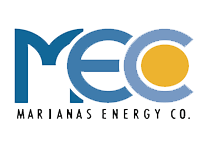





Contributors

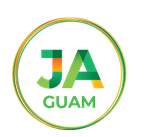

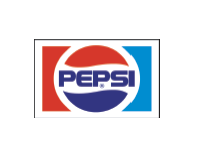


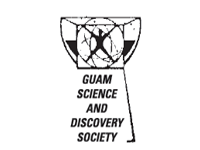

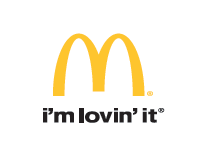


Thank You To Our Major Sponsors From The University of Guam!
